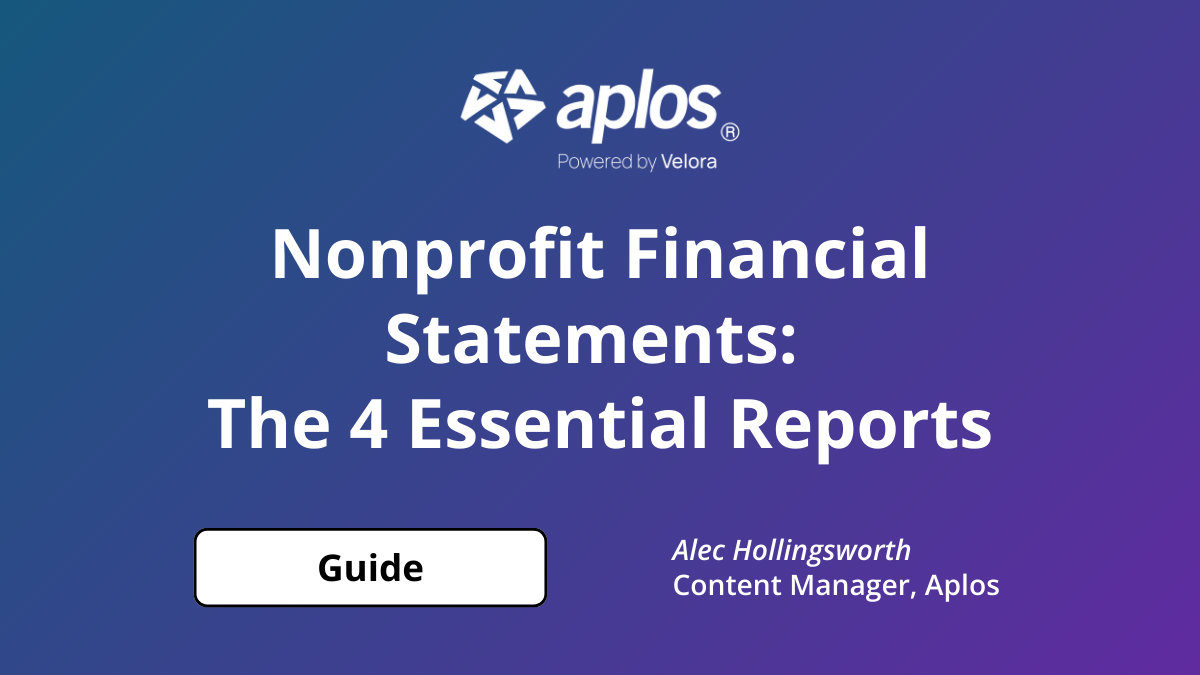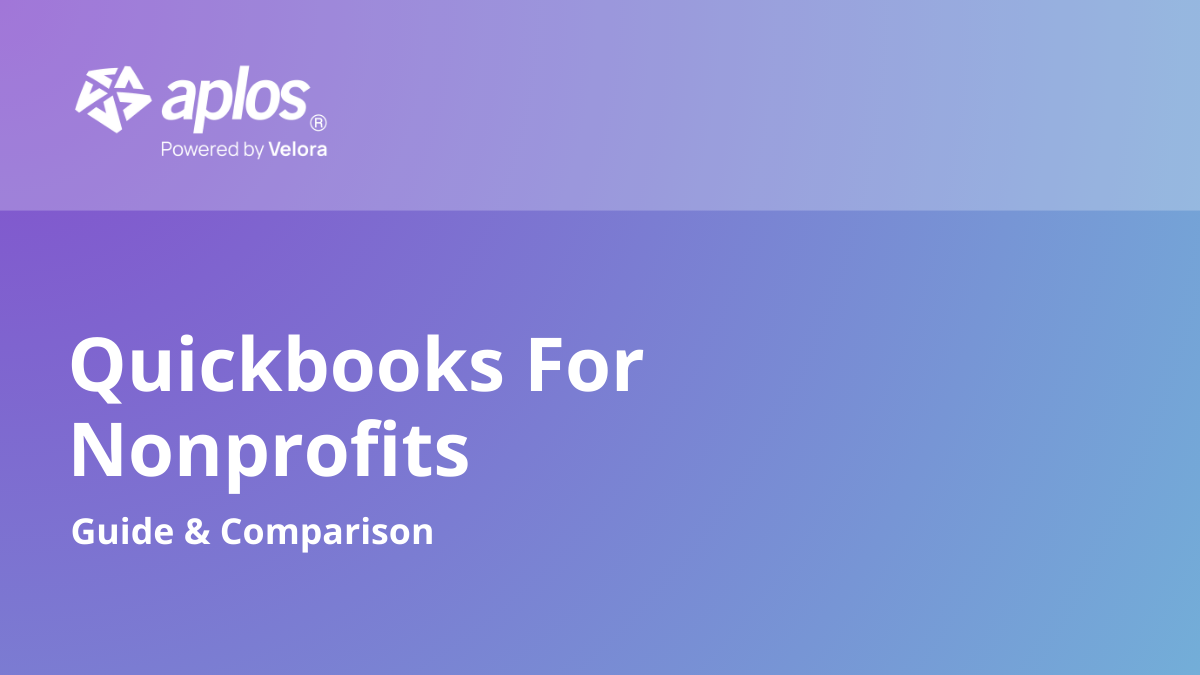
Lapsed Donors: Who Are They and How Can You Bring Them Back?

Every nonprofit has lapsed donors. These are donors who used to give to your organization, but for one reason or another, they have stopped giving. The definition of a lapsed donor differs among organizations. Most tend to define the term as a previous donor who hasn’t given to your organization in the last 12 months.
Whether you have one lapsed donor or thousands, they are incredibly important to the ongoing fundraising success of any nonprofit, no matter how big or small.
Learn how Aplos can make your nonprofit run more efficiently. Try it free for 15 days.
Here’s Why Lapsed Donors Matter
Former donors have already indicated they have an affinity for your organization. Also, they have already shown they are willing to write a check to back up their feelings about your cause. Combined, these are two strong indications your lapsed donor might be willing to become an active donor again at some point.
Don’t Give up on Them Just Yet
“A well-run organization that focuses on holding onto donors should have a first-year retention rate of around 40 to 45 percent and a multiple-year retention rate of 75 to 85 percent,” says Roger Craver, author of the book Retention Fundraising: The New Art and Science of Keeping Your Donors for Life.
Since you know you’re going to lose a minimum of 20%-40% of your donors every year to attrition, you must work at renewing the remaining 60%-80% of your active donors. At the same time, you need to work on replacing the 20%-40%. Plus, you should grow your donor base at a reasonable annual rate. So how do you do all this?
Strategies to Not Lose Donors
Whether your organization is a small nonprofit, or a large national or international organization, you need and want your donors to stay involved and keep donating. But donors can be fickle, and their interests can change quickly. Nonprofits must constantly look for ways to engage the donor to continue the relationship past the donation.
Here are some donor retention strategies:
- Send donors a personalized thank you after each donation.
- Get to know your donors, including their philanthropic passions, family, and interests.
- Involve your donors with volunteer opportunities in your organization.
- Regularly share your results and impact with your donors.
- Connect with your donors through social media, or ask them to sign up for your newsletter.
- Schedule non-fundraising donor events, such as tours, networking opportunities, or appreciation events.
- Make your donors feel irreplaceable. Continue to let them know you can’t do your work without their support.

Focusing on Lapsed Donors
How to Bring Lapsed Donors Back
Finding new donors for your organization is important. But it is even more critical to reach out and attempt to bring those lapsed donors back. When focusing on lapsed donors, a common mistake for many organizations is not distinguishing the lapsed donors from other donor groups. A common oversight is sending lapsed donors the same correspondence as your active donors or assigning them as inactive too soon. Some even ignore them altogether.
Aside from a lapsed donor being a lost relationship to your organization, you should focus on the fact that it’s more cost-effective to win back lapsed donors than it is to acquire new ones. Think about it. You’ve already built relationships with these donors. Your organization can bypass much of the initial stewardship process, which will cut your costs (both money and time) significantly.
Choose the Right Donors
The first step is defining exactly who your lapsed donors are. As mentioned before, the lapsed-donor definition will vary for different organizations. However, most agree on defining the person as a previous donor who hasn’t given to your organization in the last 12 months.
This definition might apply to a large number of people in your database, so it’s helpful to narrow the requirements of your lapsed program even further. For example, depending on the type of outreach you are doing, it might not be worth the money to focus on donors who have made gifts under $15. Focus on the donors whose donations will bring you a return on the resources you spent winning them back.
Choose the Right Communication
When thinking about winning back your donors, some communication methods will be more appropriate and effective than others. A lapsed major donor prospect will require a face-to-face visit or a phone call, but your organization might not have the resources to approach all of your lapsed donors this way.
While email appeals and formal typed letters might appeal to some, most fundraising experts agree handwritten letters are one of the most effective methods for reaching donors of any kind. Handwritten letters provide a personal touch, and show donors you took the time and effort to reach out to them.
Be Donor-Centric
The best way to show lapsed donors (or any donor for that matter) that your organization cares about them is by personalizing your outreach and making it as sincere as possible. Even things like addressing your lapsed donors by their first name will go a long way.
Any Information you have in your donor database (or other sources) that individualizes your outreach can help you with donor-centered outreach and communication. For example, if you know exactly when and how much a donor has given in the past, you might reference the time since their last donation in your next correspondence. You can also suggest the same gift size as before.
Instead of just focusing on the money, let your lapsed donors know you care about them personally. The more transparent and genuine you are with your donors, the higher the chances are they will give again. Tell your lapsed donors you miss them. Let them know just how much you value them and that you don’t want to lose them as a supporter.
The bottom line is to do whatever you can to personalize and engage your lapsed donors, and create ways for them to feel connected to your organization. Using donor management software can help in your endeavor.
Free Recorded Webinar: The Science and Art of Donor Retention
When it comes to donors, you don’t just want that initial monetary gift. While it’s nice, it’s not nearly as beneficial as a monthly donation from an engaged benefactor. In this webinar, we discuss how to retain donors after they convert the first time, as well as donor retention strategies to keep your donors active and supportive. These tips will help your organization even if you do not currently use software for donor management.
What you’ll learn:
- What donor retention is and why it matters
- Simple donor management strategies to boost retention
- Stewardship as a strategy
- How your monthly giving program affects retention
- Why all levels of donors are critical for success

Our comprehensive closeout services start at $399 per month that needs to be reconciled. Sign up before Jan 1st and pay just $199.50 per month!
Copyright © 2025 Aplos Software, LLC. All rights reserved.
Aplos partners with Stripe Payments Company for money transmission services and account services with funds held at Fifth Third Bank N.A., Member FDIC.
Copyright © 2024 Aplos Software, LLC. All rights reserved.
Aplos partners with Stripe Payments Company for money transmission services and account services with funds held at Fifth Third Bank N.A., Member FDIC.



.png)



